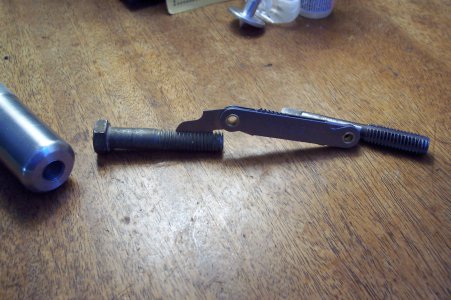- Joined
- Jan 2, 2018
- Messages
- 605
If your drilling is particularly accurate you may try larger than 5/16"(77 % thread), letter O is .3160 at 72 % thread. I do this in hard to tap materialsso we gotta 3/8 bolt with SAE threads , the chart sez to drill the part with 5/16 drill then tap with a 3/8 16 tap.........
the pitch gauge reads 16 and lines up with the tap and bolt but when I go to tap doesnt wanna go in........cant figure it out
all the time, going as low as 50% thread engagement. And this is using low run out drills in a mill with high quality taps. The first 3 threads hold over 90% of the load . According to Regal Cutting Tools, increasing the thread engagement from 60% to 72% in 1020 steel reguires twice the torque but increases strength by only 5%.


